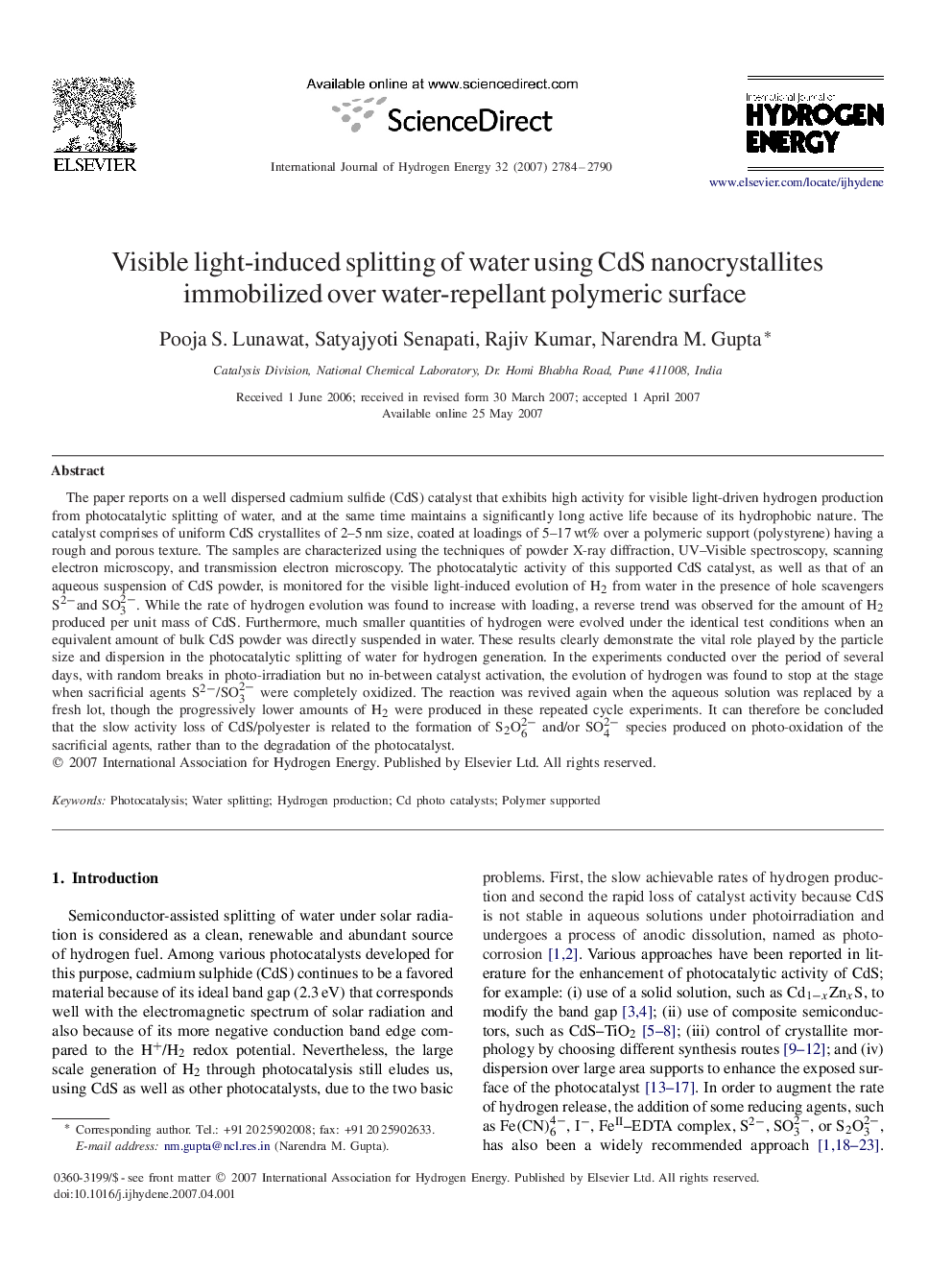| کد مقاله | کد نشریه | سال انتشار | مقاله انگلیسی | نسخه تمام متن |
|---|---|---|---|---|
| 1280177 | 1497670 | 2007 | 7 صفحه PDF | دانلود رایگان |

The paper reports on a well dispersed cadmium sulfide (CdS) catalyst that exhibits high activity for visible light-driven hydrogen production from photocatalytic splitting of water, and at the same time maintains a significantly long active life because of its hydrophobic nature. The catalyst comprises of uniform CdS crystallites of 2–5 nm size, coated at loadings of 5–17 wt% over a polymeric support (polystyrene) having a rough and porous texture. The samples are characterized using the techniques of powder X-ray diffraction, UV–Visible spectroscopy, scanning electron microscopy, and transmission electron microscopy. The photocatalytic activity of this supported CdS catalyst, as well as that of an aqueous suspension of CdS powder, is monitored for the visible light-induced evolution of H2H2 from water in the presence of hole scavengers S2-S2-and SO32-. While the rate of hydrogen evolution was found to increase with loading, a reverse trend was observed for the amount of H2H2 produced per unit mass of CdS. Furthermore, much smaller quantities of hydrogen were evolved under the identical test conditions when an equivalent amount of bulk CdS powder was directly suspended in water. These results clearly demonstrate the vital role played by the particle size and dispersion in the photocatalytic splitting of water for hydrogen generation. In the experiments conducted over the period of several days, with random breaks in photo-irradiation but no in-between catalyst activation, the evolution of hydrogen was found to stop at the stage when sacrificial agents S2-S2-/SO32- were completely oxidized. The reaction was revived again when the aqueous solution was replaced by a fresh lot, though the progressively lower amounts of H2H2 were produced in these repeated cycle experiments. It can therefore be concluded that the slow activity loss of CdS/polyester is related to the formation of S2O62- and/or SO42- species produced on photo-oxidation of the sacrificial agents, rather than to the degradation of the photocatalyst.
Journal: International Journal of Hydrogen Energy - Volume 32, Issue 14, September 2007, Pages 2784–2790